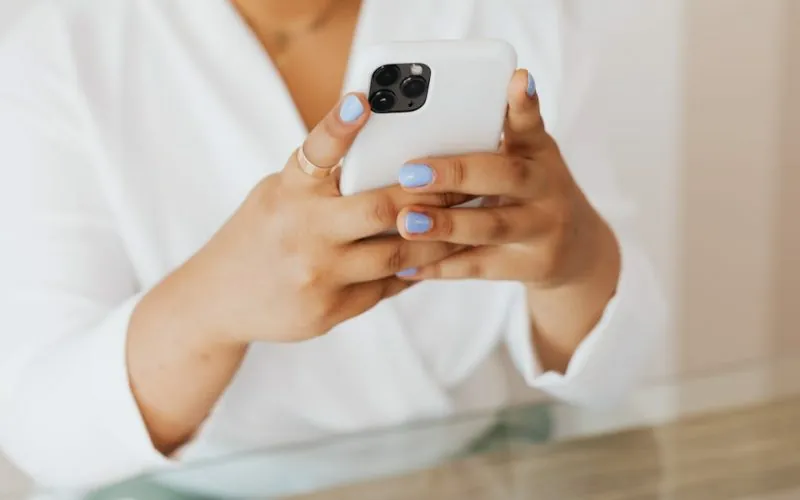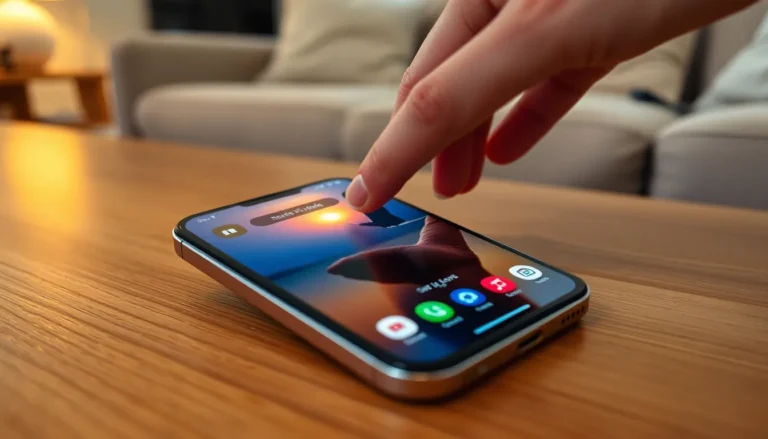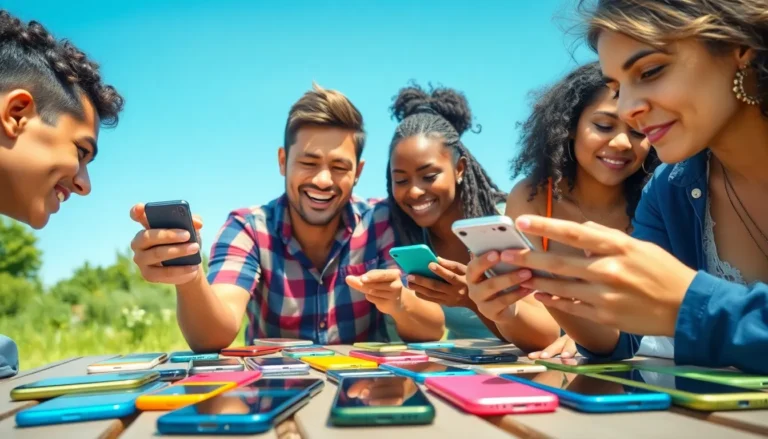Table of Contents
ToggleSwitching to a new iPhone can feel like moving to a new city—exciting but a bit overwhelming. One minute you’re basking in the glow of your shiny new device, and the next, you’re staring at a blank contact list wondering how to reconnect with all those friends, family, and that one guy from the coffee shop. Fear not! Transferring your contacts from one iPhone to another isn’t rocket science, and it certainly doesn’t involve a secret handshake or a complicated ritual.
Understanding the Need for Contact Transfer
Transferring contacts from one iPhone to another ensures seamless communication. New devices offer advanced features and improved performance, making them appealing choices for users. Maintaining important connections while switching devices remains crucial for efficiency and convenience.
People often worry about losing valuable contacts during the transition. Ensuring that friends, family, and colleagues remain accessible is essential for maintaining relationships. Users also benefit from the ability to access business contacts quickly on their new device.
Backing up contacts prior to a device switch averts unforeseen complications. This process eliminates the risk of losing essential information, making it more reliable. Easily transferring data between devices streamlines the setup process, saving users time and effort.
Various methods are available for transferring contacts. iCloud synchronization represents one popular way. Bluetooth sharing is another option that offers quick and straightforward transfer capabilities.
To summarize, transferring contacts plays a vital role in enhancing the overall experience of using a new iPhone. Emphasizing connectivity with friends, family, and work associates simplifies life during technology upgrades. Keeping contacts intact guarantees continuity in communication, which remains a top priority for every user.
Methods to Transfer Contacts
Transferring contacts from one iPhone to another can happen through several effective methods. Below are detailed options for transferring contacts smoothly.
Using iCloud
iCloud offers a seamless way to transfer contacts. Users need to enable iCloud for Contacts on both devices through Settings. After that, signing in with the same Apple ID on the new iPhone allows automatic sync of contacts. Ensure that both iPhones have internet access during this process. Changes made on one device reflect on the other, maintaining an up-to-date contact list.
Using iTunes
iTunes provides another straightforward method for contact transfer. First, connect the old iPhone to a computer running iTunes and create a backup. This backup should include contacts. Next, disconnect the old iPhone and connect the new one. Choose the option to restore the backup from iTunes. This method also enables restoring other data along with contacts for a comprehensive transfer.
Using Third-Party Apps
Third-party apps can facilitate contact transfers effectively. Many apps are available on the App Store designed specifically for this purpose. Users download and install an app like My Contacts Backup or Copy My Data. Afterward, they follow the app’s instructions to export contacts from the old iPhone and import them to the new one. These apps typically offer user-friendly interfaces and efficient solutions, making them appealing options for contact transfers.
Step-by-Step Guide for Each Method
Transferring contacts from one iPhone to another is simple with various methods available. Here’s how to do it using iCloud, iTunes, and third-party apps.
iCloud Transfer Process
First, ensure both iPhones are signed in to the same Apple ID. Navigate to Settings on the old iPhone, tap on your name, then select iCloud. Toggle on Contacts to enable syncing. After completing this, grab the new iPhone and go to Settings. Tap on your name again and select iCloud. Toggle on Contacts to start the transfer. It’s crucial to have a stable Wi-Fi connection throughout this process to avoid interruptions.
iTunes Transfer Steps
Connect the old iPhone to a computer using a USB cable. Launch iTunes and select the device icon. Under Summary, choose Back Up Now to create a backup of contacts. Once the backup is complete, disconnect the old iPhone and connect the new one. In iTunes, select Restore Backup and choose your latest backup. Contacts will then transfer effortlessly to the new device, maintaining all existing information.
Third-Party App Recommendations
Consider using My Contacts Backup for a user-friendly option. Download the app on the old iPhone, then select Export and choose to email the contacts to yourself. Open the email on the new iPhone and tap the attachment to import contacts. Another option is Copy My Data, which allows easy transfer over Wi-Fi. Install the app on both devices, follow the on-screen instructions, and choose which contacts to transfer. Each app provides a straightforward approach to transferring contacts reliably.
Troubleshooting Common Issues
Transferring contacts may lead to common issues that disrupt the process. Users might encounter problems syncing contacts through iCloud. Restarting devices often helps resolve this issue, especially if contact syncing is enabled but not working.
Another frequent problem involves outdated software on the old or new iPhone. Verifying that both devices run the latest iOS version ensures compatibility. Users can check for updates in the Settings app under General, then tap Software Update.
Some users experience difficulties with iTunes backups. If iTunes fails to recognize a device, reconnecting the iPhone to the computer with a different USB cable can help. Additionally, restarting iTunes may resolve connection issues during backup or restore processes.
Bluetooth transfer issues can occur as well. Ensuring both devices are discoverable and within range is crucial for a successful connection. Users should also confirm that their Bluetooth settings are correctly enabled on both iPhones.
Third-party apps may not function as expected at times. Users should ensure the app has the necessary permissions to access contacts. Restarting the app or reinstallation can often clear up any glitches.
Error messages during the transfer process can appear unexpectedly. Taking note of specific error messages can aid troubleshooting. Searching support forums or contacting Apple support can provide guidance on resolving these errors.
Transferring contacts from one iPhone to another is a crucial step in ensuring a smooth transition to a new device. With various methods available like iCloud syncing iTunes backups and user-friendly third-party apps the process is easier than ever. By following the steps outlined users can keep their essential connections intact and avoid the stress of losing important information.
Maintaining contact continuity not only enhances communication but also maximizes the benefits of a new iPhone. Embracing this transition with confidence allows users to fully enjoy the advanced features and improved performance that their new device has to offer.





